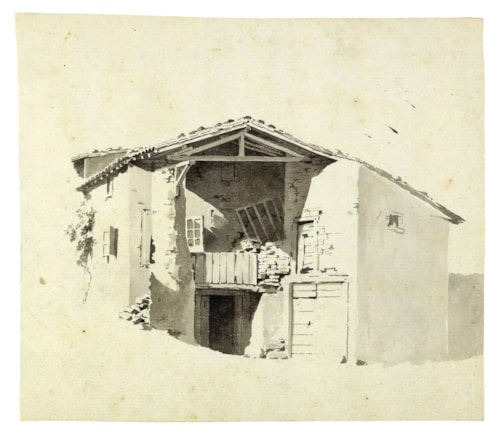
Jean-Jacques de BOISSIEU
Lyon 1736 - Lyon 1810
Biography
‘M. de Boissieux, de Lyon, excellent dessinateur, également célèbre par ses ouvrages et par ses vertus’, wrote the Comte de Forbin several years after the death of Jean-Jacques de Boissieu, one of the most gifted draughtsmen working in the French provinces in the latter half of the 18th century. Apart from a few years of study at the Ecole Gratuite de Dessin in his native Lyon, de Boissieu seems to have been largely self-taught. Apart from a few years in Paris and Italy, he worked almost exclusively in Lyon. After studying with the painter Jean-Charles Frontier, Boissieu embarked upon the life of the amateur, travelling throughout the countryside around Lyon and the Rhône valley, making landscape and genre studies. As the artist noted, in a letter to his friend Johann Georg Wille in 1761, 'I have always made drawings directly from nature, and for me there is no more delightful pleasure.' Indeed, he seems to have preferred drawing to painting, and completed only a handful of canvases. He also created a large number of engravings, and may have been introduced to the medium by Wille, soon after his arrival in Paris in 1763. Between 1764 and 1765 de Boissieu accompanied the Duc de la Rochefoucauld on a voyage throughout Italy, producing numerous landscape studies that he would later work up into finished drawings. The success of this trip led to a second journey in the company of La Rochefoucauld, this time to the Auvergne, where he was engaged on drawing the volcanic peaks of the region. He never exhibited at the Paris Salon, though in 1768 he showed one painting, eight drawings and two etchings at the Salon des Arts in Lyon. After another brief stay in Paris, de Boissieu settled in 1772 in Lyon, where he worked for the remainder of his career.
De Boissieu’s drawings and prints display the particular influence of the Dutch and Flemish artists whose paintings he copied and collected, and especially the graphic work of Rembrandt. (Indeed, the artist was nicknamed the ‘Dutchman of Lyon’ by Edmond de Goncourt, while his grandson and biographer Alphonse de Boissieu described him as ‘a Dutchman who wandered the pleasant banks of the Saône.’) As a draughtsman, he often worked in either grey, black or brown ink wash, and his drawings are characterized by a freshness imparted by the use of a single shade of ink, as well as an abiding interest in light effects. Although many of his drawings are signed with his initials and dated, his style remained relatively unchanged throughout his career, and undated drawings can therefore be difficult to place within his chronology. Between 1780 and 1800 de Boissieu made a particular specialty of highly finished landscapes of Lyonnais scenes, executed in grey ink and wash. These works proved very popular with collectors and many of them were reproduced as engravings. De Boissieu also produced several portraits and figure studies in red or black chalk, drawn with an acute psychological penetration. Some seven hundred drawings by the artist survive today, with significant groups in the Louvre, the Musée des Beaux-Arts in Lyon and the Hessisches Landesmuseum in Darmstadt.


